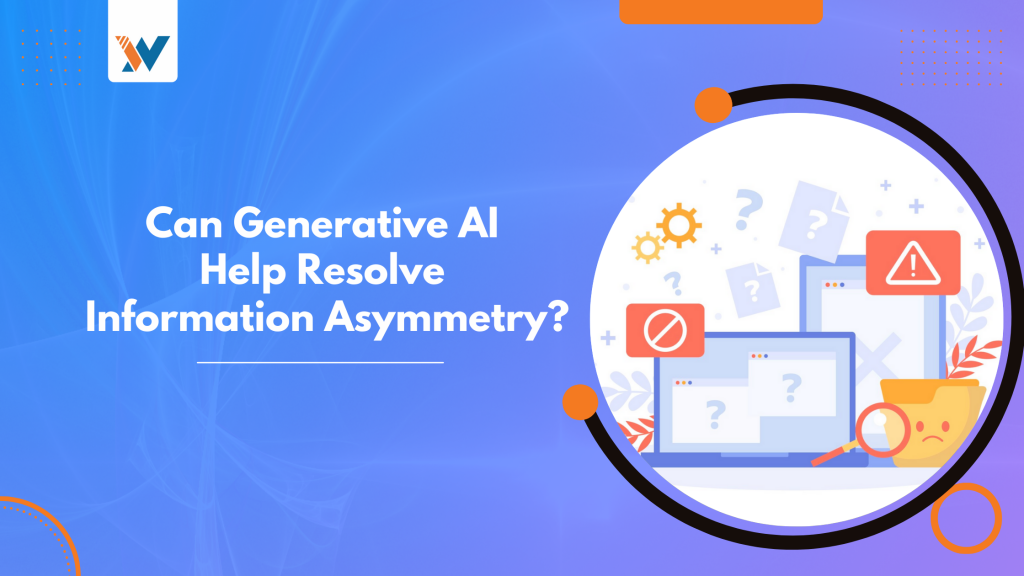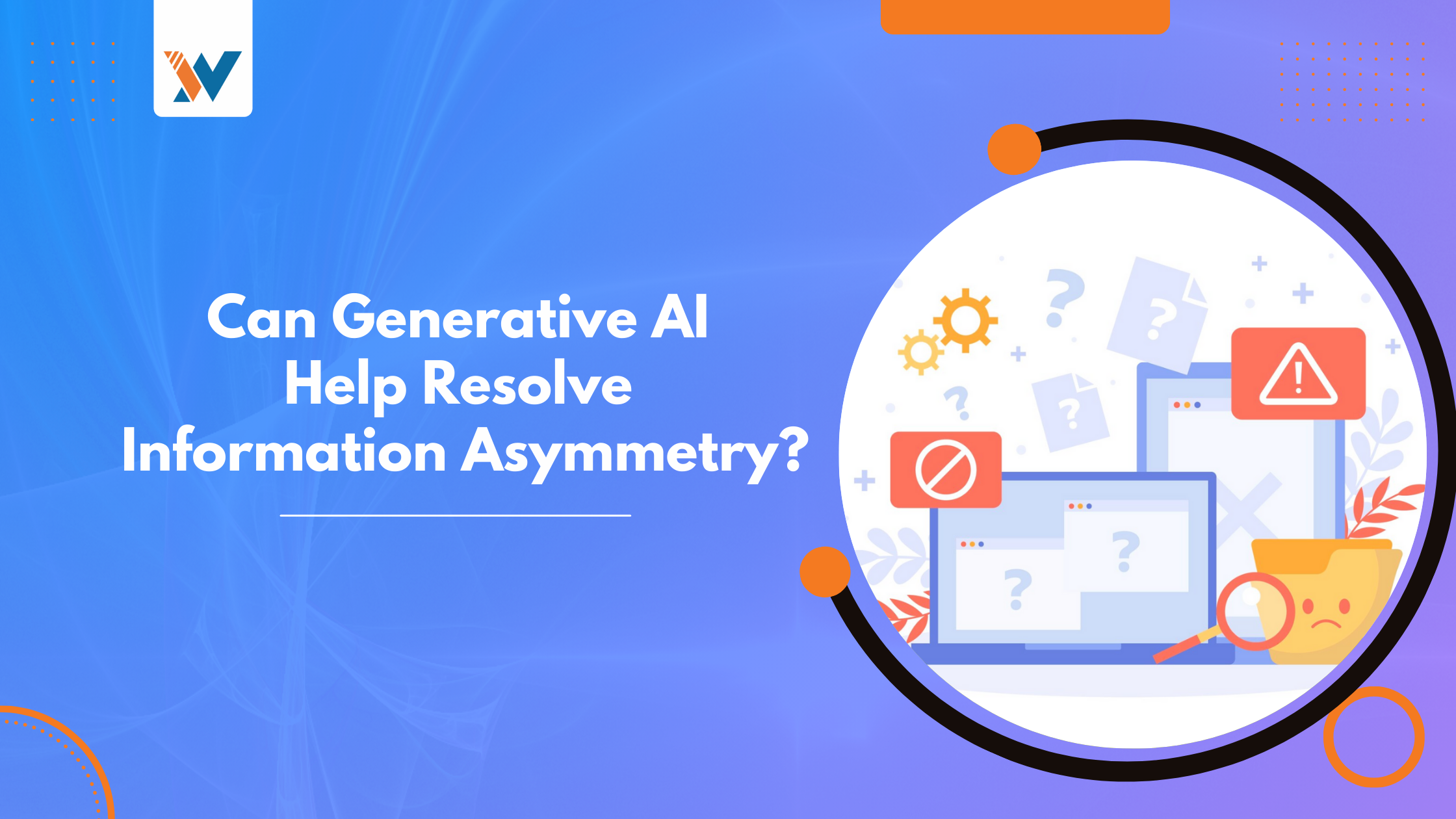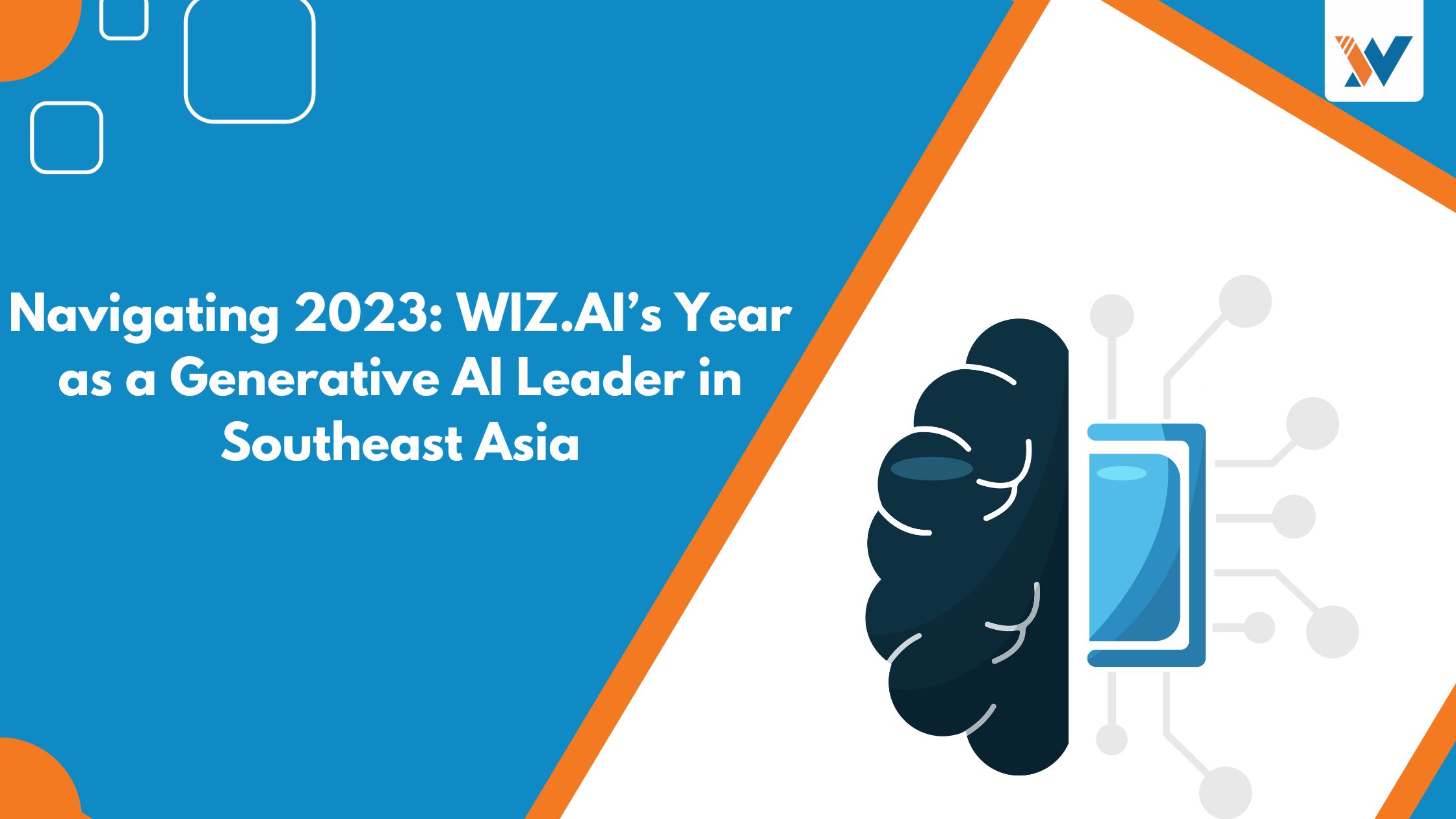
Generative AI has taken over the world by revolutionizing how we engage with technology. However, even in such a transformative period, pressing issues like information asymmetry continue to proliferate, resulting in power imbalances, negative results, unethical behavior, exploitation, and more. Although these hurdles exist, the evolving technology of generative artificial intelligence is coming up with developments that can reduce information asymmetry. Read on to find out about information asymmetry and how to tackle information asymmetry with generative AI from this blog.
The Current Landscape of Information Asymmetry: An Overview
Information asymmetry is a concept ingrained in economics in connection with capital markets. However, it is applicable in other scenarios as well, especially in relation to handling and managing information. In a nutshell, information asymmetry refers to a situation where an agent has more or better information than the other agent involved in a discussion. Information asymmetry can be found in different forms, including adverse selection, moral hazard, and monopolies of knowledge.  Although there are different types of information asymmetry, it is essential to note that the adverse implications of information asymmetry are contextual and information asymmetry is not altogether a negative concept. Currently, information asymmetry is present in different sectors, ranging from banking to education to healthcare and more, in one form or the other. For instance, in banking, information asymmetry occurs when customers have unclear information about loan eligibility criteria, terms and conditions, and other such details. Similarly, bankers can be misinformed about borrowers’ credit risk assessments, where the latter would have a better understanding of their financial health than the former. In healthcare, information imbalance exists for payers/patients about medical knowledge, prices of different medical procedures, insurance coverage, and policies. When it comes to e-Commerce, information asymmetry can be observed when customers lack clarity on pricing of products or services, terms of service, return policies, and so on. To summarize, information asymmetry can result from lack of information for an individual agent or a group of people and also from misinformation, which occurs due to lack of transparency and inaccuracy in the information shared. These factors can impact decision-making for the less or mis-informed party. However, by relying on the power of generative AI, businesses can now focus on handling information asymmetry efficiently.
Although there are different types of information asymmetry, it is essential to note that the adverse implications of information asymmetry are contextual and information asymmetry is not altogether a negative concept. Currently, information asymmetry is present in different sectors, ranging from banking to education to healthcare and more, in one form or the other. For instance, in banking, information asymmetry occurs when customers have unclear information about loan eligibility criteria, terms and conditions, and other such details. Similarly, bankers can be misinformed about borrowers’ credit risk assessments, where the latter would have a better understanding of their financial health than the former. In healthcare, information imbalance exists for payers/patients about medical knowledge, prices of different medical procedures, insurance coverage, and policies. When it comes to e-Commerce, information asymmetry can be observed when customers lack clarity on pricing of products or services, terms of service, return policies, and so on. To summarize, information asymmetry can result from lack of information for an individual agent or a group of people and also from misinformation, which occurs due to lack of transparency and inaccuracy in the information shared. These factors can impact decision-making for the less or mis-informed party. However, by relying on the power of generative AI, businesses can now focus on handling information asymmetry efficiently.
How can Generative AI Resolve Information Asymmetry?
As mentioned earlier, lack of information and the presence of misinformation are two critical elements causing information asymmetry. However, adopting generative AI solutions can help resolve this imbalance of information. Organizations can incorporate generative AI-powered tools like chatbots and voicebots trained using the information from Large Language Models (LLMs). They can facilitate fairness of information, primarily because these models can be trained continuously and frequently with up-to-date data. For instance, solutions offered by AI-service providers like NeogenixAI ensure accuracy in data and also improve information balance by training its models with data obtained from the public domain and complimenting them with proprietary data relevant to each industry and organization. AI-powered solutions can, thus, help customers or users garner the required information and remove themselves from ambiguity. For instance, banks can overcome the issue of lack of information among customers or prospects about different investment plans and loans by relying on generative AI-powered chatbots and voice bots. In this scenario, bots, trained on relevant data, can provide customers with correct information. Similarly, it applies in other industries like healthcare as well, where medical chatbots can offer patients or payers summaries of their health information, address their medical concerns, and create customized treatment recommendations based on previous interactions, medical history, reports, and other data. Learn more on this topic from our blog on the different ways generative AI can be utilized in the healthcare sector. In short, solutions provided by platforms like NeogenixAI can tackle the issue of lack of information and the presence of wrong information seamlessly via well-trained Large Language Models. Additionally, these solutions can engage with people in regional languages like Bahasa, Mandarin, and others and facilitate them with relevant information, further fostering the reduction of information asymmetry. These factors can enhance knowledge dissemination and democratization, boosting information symmetry.  Generative AI solutions are evolving further towards bringing in transparency and accuracy to reduce the sharing of wrong information. Bringing in regulations and ethical practices focused on lowering misinformation, including enhancing data transparency, responsibility, and accessibility, can be beneficial in this process. Additionally, yet another way to improve transparency, accuracy, and trust is by adopting a technique called Retrieval Augmented Generation (RAG). Learn more about this topic from our blog on Retrieval Augmented Generation. RAG can improve the reliability of generative AI models based on facts from external resources. LLM parameters focus on matching keywords and are human-like, aiding them to respond to prompts quickly. Due to this, they can not provide citations and perform fact checks. However, RAG can connect LLMs with external resources and help tackle this concern. This can make LLMs more grounded, reduce hallucinations, aid them in facilitating citations, and lower the chances of sharing wrong information. RAG can also play a role in reducing the proliferation of biases that could arise while relying on generative AI-powered tools. Thus, in short, generative AI can, indeed, play a critical role in reducing information asymmetry present in different sectors, which can be through the creation of information balance and democratization.
Generative AI solutions are evolving further towards bringing in transparency and accuracy to reduce the sharing of wrong information. Bringing in regulations and ethical practices focused on lowering misinformation, including enhancing data transparency, responsibility, and accessibility, can be beneficial in this process. Additionally, yet another way to improve transparency, accuracy, and trust is by adopting a technique called Retrieval Augmented Generation (RAG). Learn more about this topic from our blog on Retrieval Augmented Generation. RAG can improve the reliability of generative AI models based on facts from external resources. LLM parameters focus on matching keywords and are human-like, aiding them to respond to prompts quickly. Due to this, they can not provide citations and perform fact checks. However, RAG can connect LLMs with external resources and help tackle this concern. This can make LLMs more grounded, reduce hallucinations, aid them in facilitating citations, and lower the chances of sharing wrong information. RAG can also play a role in reducing the proliferation of biases that could arise while relying on generative AI-powered tools. Thus, in short, generative AI can, indeed, play a critical role in reducing information asymmetry present in different sectors, which can be through the creation of information balance and democratization.
What Risks Lie in Mitigating Information Asymmetry with Generative AI, and What Does the Future Hold?
As generative AI is an evolving concept, some potential risks and challenges are involved.There can be drawbacks and concerns like system hallucinations, data compression, copyright infringement, ethical issues, and other potential risks. One such risk is using data with amplified stereotypes for training future models and also while performing RAG. This would have a snowballing effect on generative AI models. However, as discussed earlier, these challenges can be curbed by relying on the advancements in artificial intelligence. The current RAG model has its limitations. But, in the future, it could incorporate user-specific knowledge and become highly customizable and scalable. Optimistically, the other developments happening in the world of AI such as the contributions from a robust AI community would also pave the way for an equitable and informed future.
Final Thoughts
To summarize, the developments taking place in generative AI can indeed play a role in handling information asymmetry. The concerns related to information asymmetry can be curtailed not just through the adoption of generative AI but also by bringing in regulations related to data transparency, ethical practices, and adoption of techniques like RAG. 
References
- Merritt, R. (2023, November 21). What Is Retrieval Augmented Generation aka RAG | NVIDIA Blogs. NVIDIA Blog. https://blogs.nvidia.com/blog/what-is-retrieval-augmented-generation/#:~:text=Generation%20(RAG)%3F-,Retrieval%2Daugmented%20generation%20(RAG)%20is%20a%20technique%20for%20enhancing,how%20many%20parameters%20they%20contain.
- V. I. (2023, August 24). How to Mitigate Gen AI Hallucinations, Bias & Intellectual Property Risk in LLMs – Aug. 2023. YouTube. https://www.youtube.com/watch?v=Nn-xu1NsGgk
- What is Retrieval Augmented Generation (RAG)? | A Comprehensive RAG Guide. (n.d.). Elastic. https://www.elastic.co/what-is/retrieval-augmented-generation




